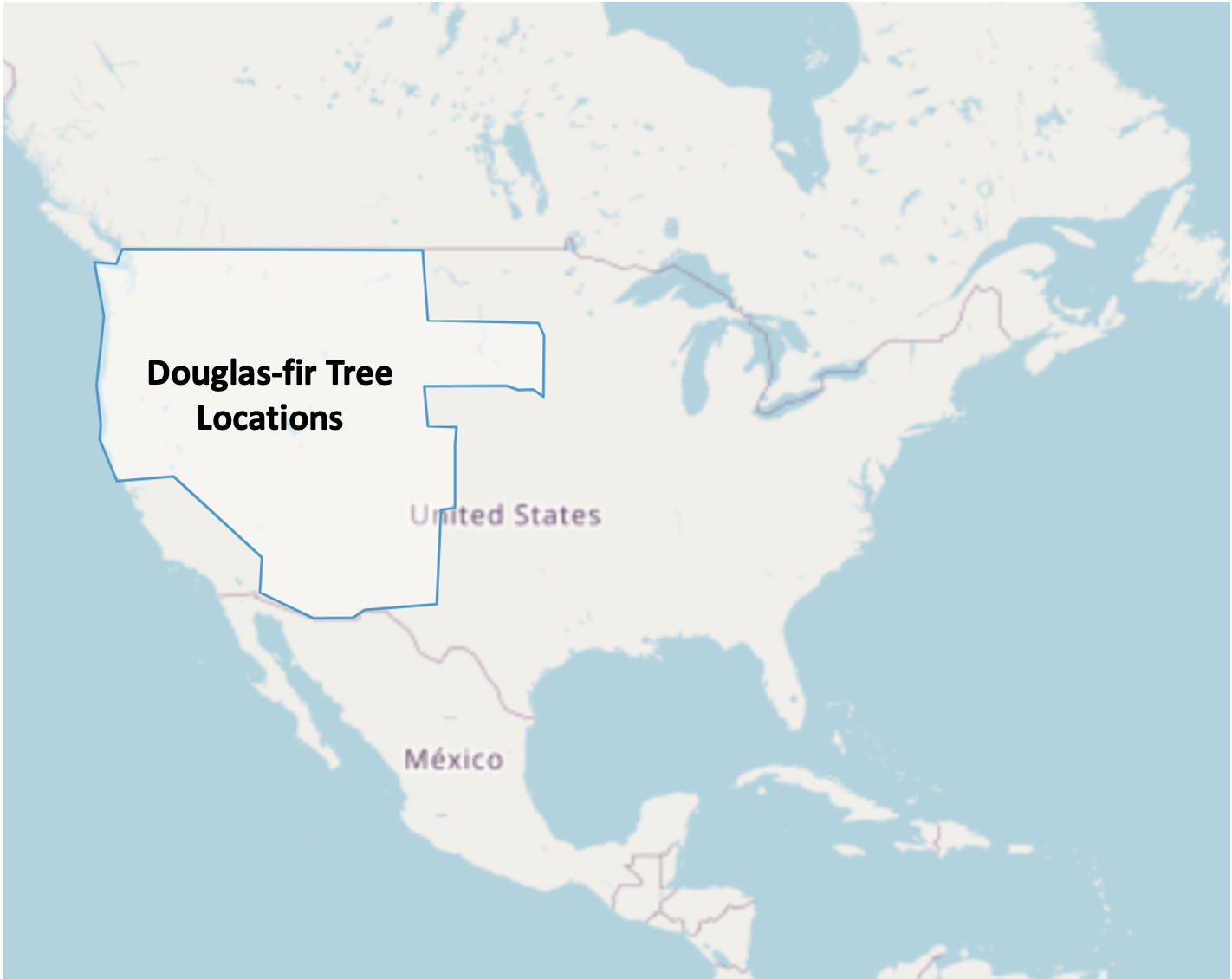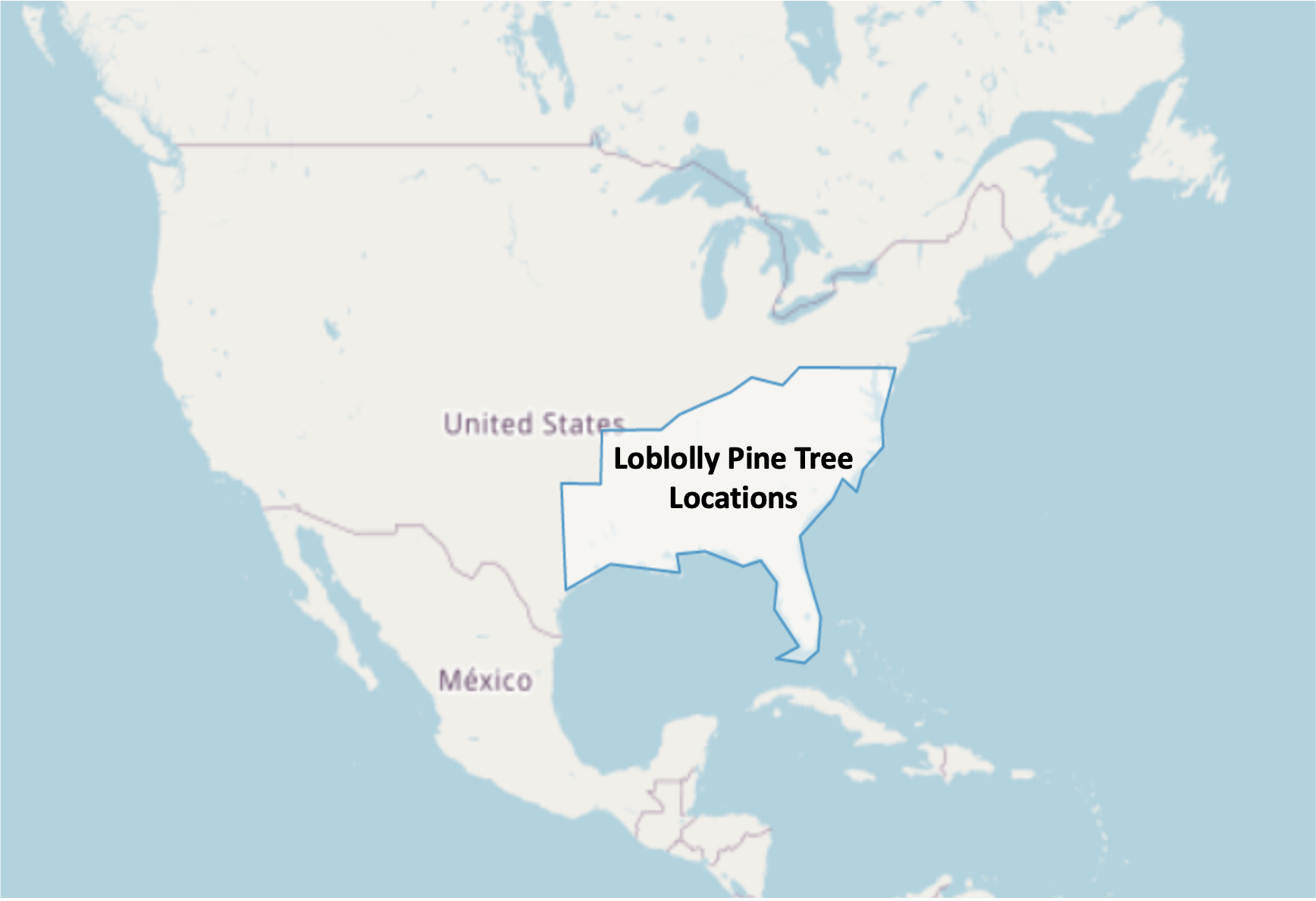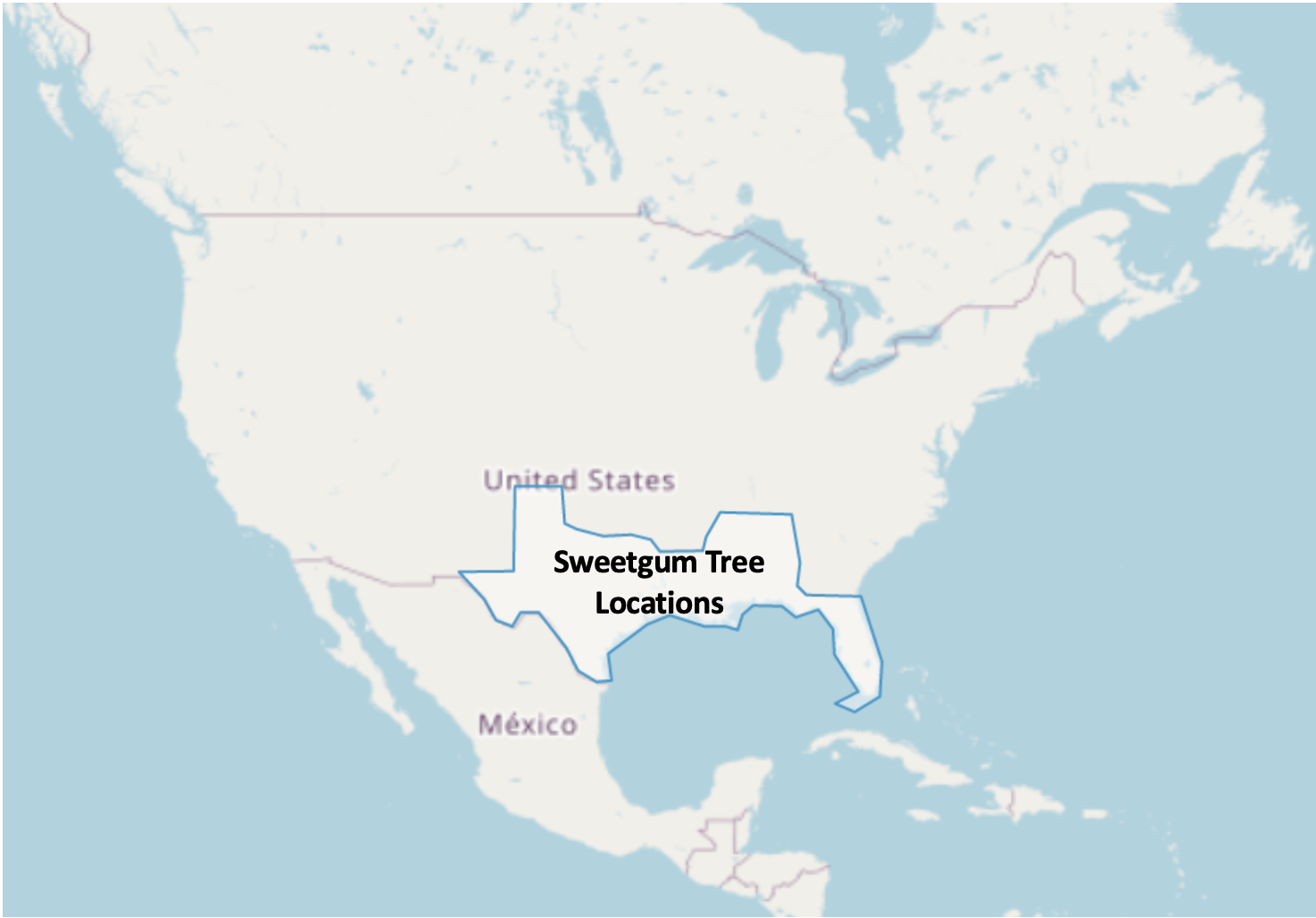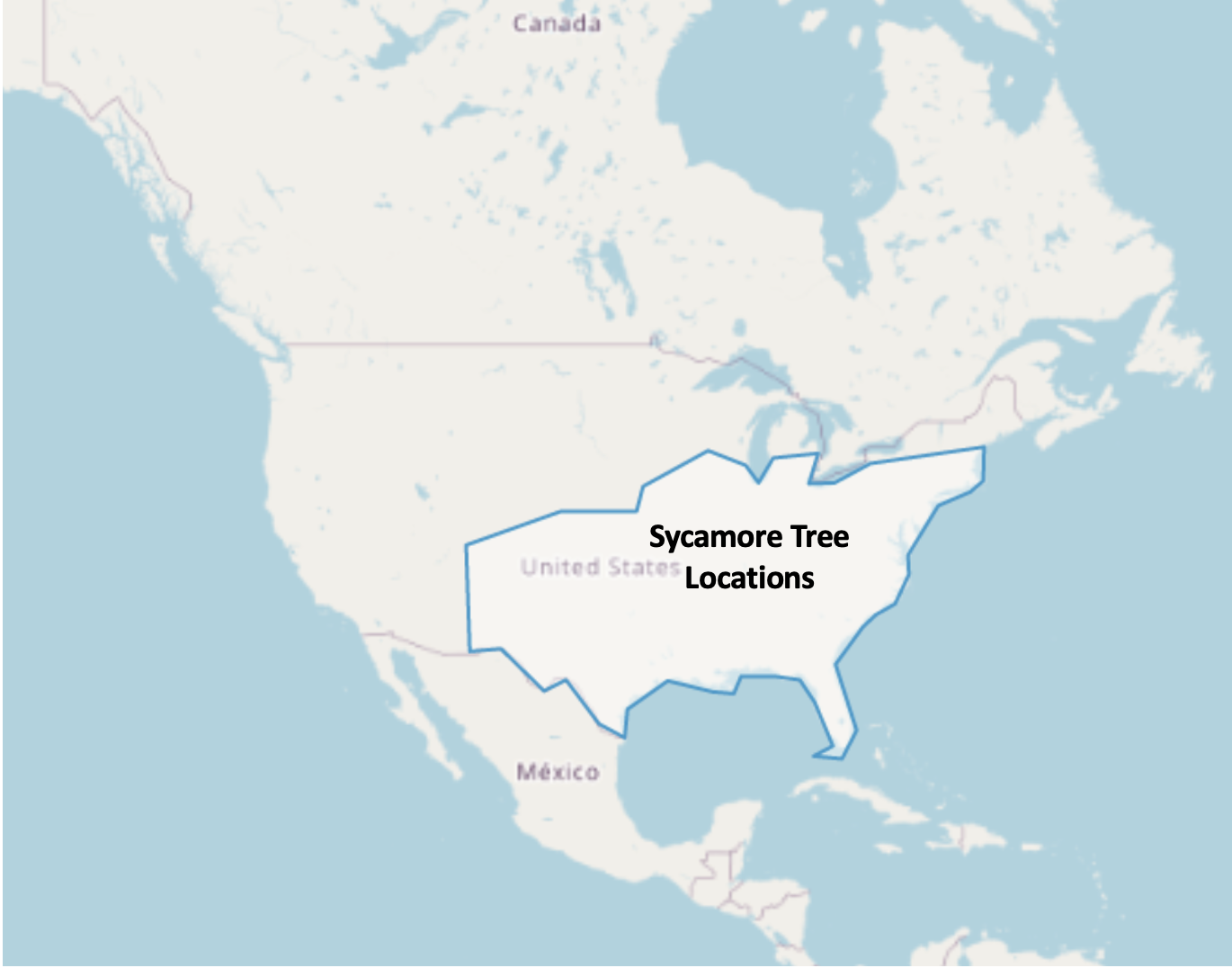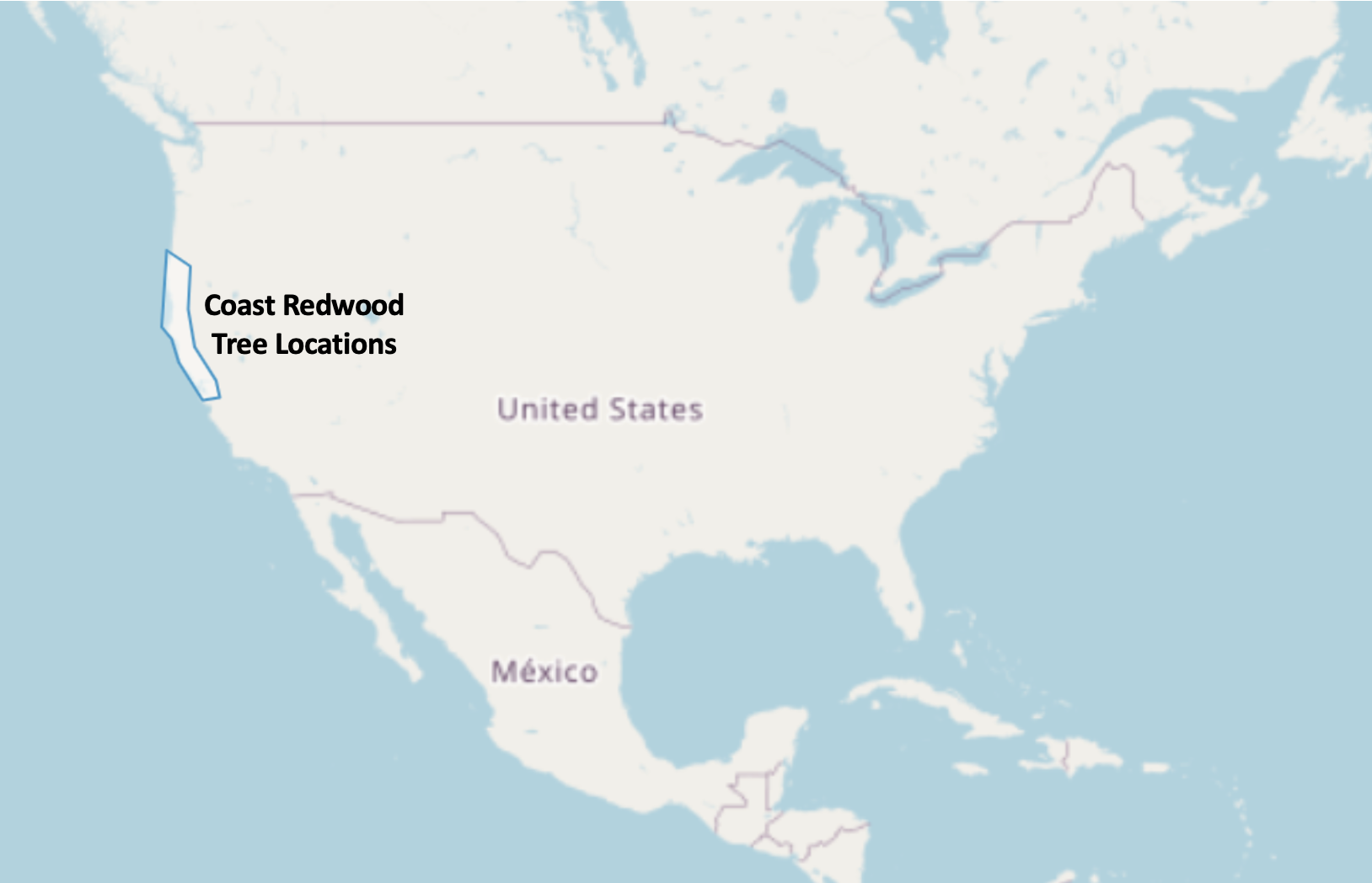NASA Moon Trees Quest - GLOBE Observer
NASA Moon Trees Quest
21 June to 21 September 2023
Short link to this page: https://observer.globe.gov/nasa-moon-trees-quest
Below is a video highlight reel of the observations we received during the quest period. While the Moon Trees Quest has concluded, we welcome your measurements of tree heights using the Trees tool in the GLOBE Observer app at any time, of Moon Trees or any tree, quest or not.
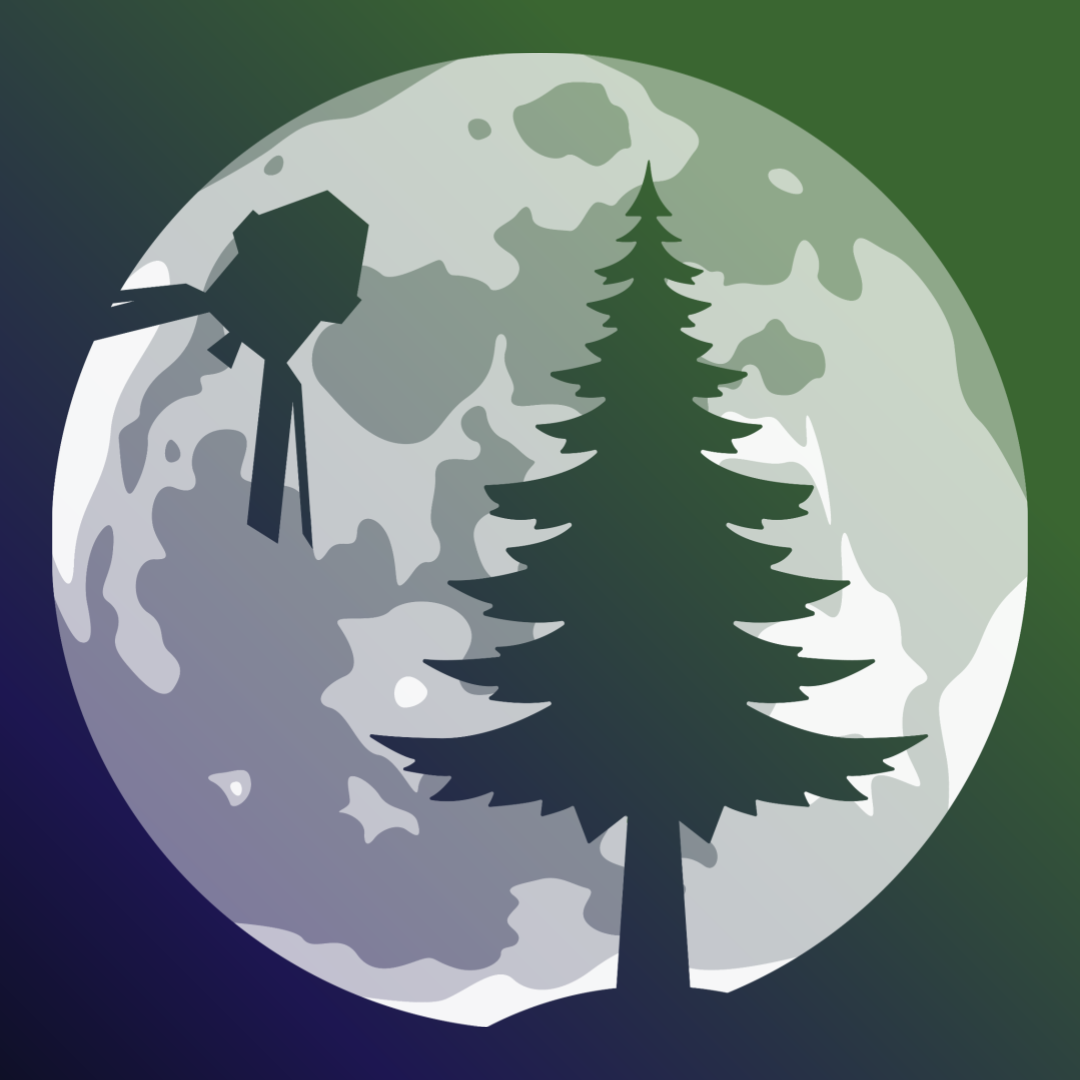
The GLOBE Program's GLOBE Observer, in collaboration with NASA Next Gen STEM ![]() and the USDA Forest Service
and the USDA Forest Service ![]() , invites you to join the NASA Moon Trees Quest for Apollo 14 Moon Trees and related tree species. This activity is part of a collaborative STEM Engagement initiative to inspire the Artemis generation
, invites you to join the NASA Moon Trees Quest for Apollo 14 Moon Trees and related tree species. This activity is part of a collaborative STEM Engagement initiative to inspire the Artemis generation ![]() .
.
Background:
On 31 January 1971, NASA launched the Apollo 14 spacecraft with hundreds of tree seeds onboard in astronaut Stuart Roosa’s personal kit. Once returned from lunar orbit, the seeds were germinated by the Forest Service and planted mostly around the United States, with a small number outside of the United States. The majority of these Apollo 14 Moon Trees continue to survive: sycamore, loblolly pine, coast redwood, sweetgum, and Douglas-fir trees. Over the last 50+ years, many of these trees continue to grow and stay healthy, but some have died, been removed, or remain on private property.
Fast forward to 16 November 2022 and the launch of the Artemis I spacecraft. Onboard Artemis were approximately 2,000 tree seeds that travelled about 270,000 miles from Earth. That’s more than 40,000 miles beyond the far side of the moon, where no seed—or human—has gone before. With a nod to Apollo 14 of 1971 and to the current Artemis I Mission, a collaborative quest has been designed.
Starting 21 June 2023 and running through 21 September 2023, the GLOBE Program's GLOBE Observer will be hosting the NASA Moon Trees Quest in collaboration with NASA Next Gen STEM, the Artemis Program Education Team, and the USDA Forest Service. The first goal of this quest is to seek out the species of trees of the same type (sycamores, loblolly pines, coast redwoods*, sweetgums, and Douglas-firs) as those of the Apollo 14 Moon Trees, and take tree height observations with the GLOBE Observer Trees tool. The second goal of this quest is to seek out and take tree height observations of the actual, accessible (living, on public property, geographic coordinated known) of the Apollo 14 Moon Trees. When the app is open, a notification will alert an observer when they are close to an Apollo 14 Moon Tree and direct them to the tree's location.
*According to Dr. Kasten Dumroese, senior scientist with the Forest Service, “Four of the five species flown on the original Apollo 14 Moon Trees mission were onboard Artemis I again because they are common species and together represent a broad geographic area of the lower 48 states. Coast redwood, with a somewhat limited natural range, was replaced with its cousin, giant sequoia, which has more widespread use in parks and arboreta."
Check out the most recent GLOBE Observer Blog, "Moon Trees and You: From Apollo to Artemis with The GLOBE Program’s GLOBE Observer Trees" by Brian Campbell - NASA Senior Earth Science Outreach Specialist at the NASA Goddard Space Flight Center’s Wallops Flight Facility in Wallops Island, Virginia USA and Kelly McCarthy - Education Program Specialist, serving as a Co-lead for the Next Gen STEM Earth Mission Focus Area in the NASA Office of STEM Engagement at the NASA Stennis Space Center in Mississippi, USA.
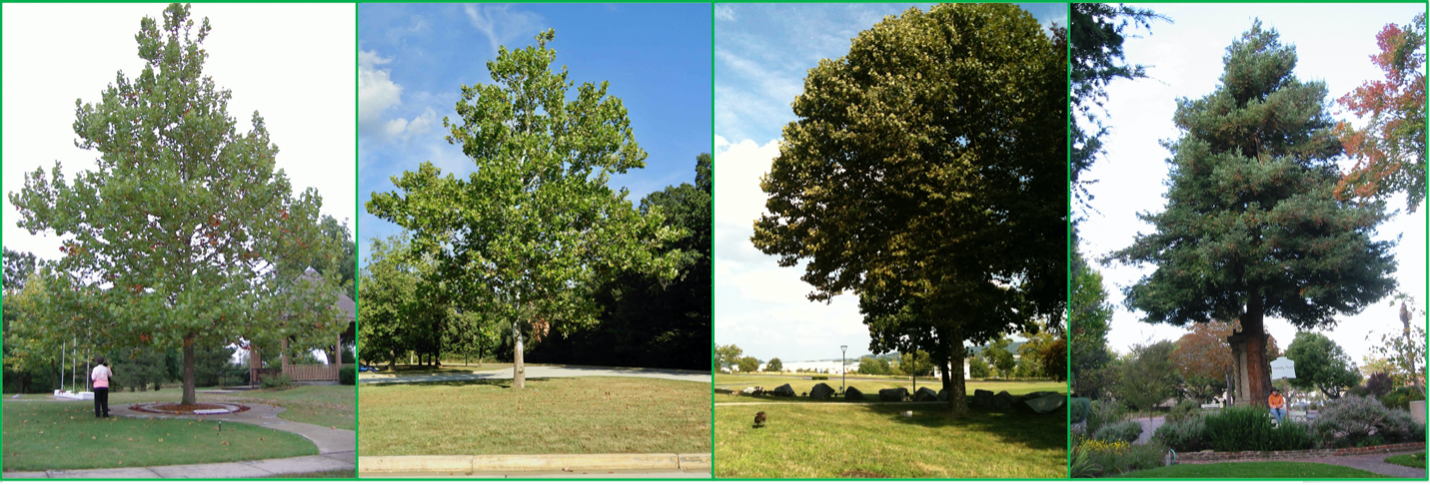
What are we asking GLOBE Observers to do for the NASA Moon Trees Quest?
We are asking GLOBE Observer volunteers in the United States to help us find and measure the tree heights of Apollo 14 Moon Trees species (Douglas-fir, loblolly pine, sweetgum, sycamore, and coast redwood) and actual Apollo 14 Moon Trees around the United States with this regional data quest.
How to participate:
- Download the GLOBE Observer app and register an account.
- In the GLOBE Observer app, navigate to the Trees tool and scroll through the Introduction, adding your height information and choose your preferred unit of measurement, then scroll through and review the Trees tool tutorial.
- If you are in the United States, click on the orange alert bell in the upper right corner of the GLOBE Observer app home screen. Then click on the project for your location to see which tree species (Douglas-fir, loblolly pine, sweetgum, sycamore, and coast redwood) you should measure in your region. Add #MoonTree and the tree species to the field notes as described in the project directions.
- If you are near an accessible Apollo 14 Moon Tree, you will receive an in-app message directing you to the tree. Measure the height of the Moon Tree and add #MoonTree to the field notes.
The Moon Tree Quest is built on a new feature in the GLOBE Observer app: a data request function. When you are in an area where these tree species grow natively, you will see an orange bell appear on the home screen after you open the app. Click on the bell to learn which measurements have been requested near you. If you are near a known Moon Tree within these regions, you will also receive an in-app message directing you to the tree.

Click on the tree species region maps below to learn more about the trees you are looking for with the NASA Moon Trees Quest! Please note that each of these species is commonly used in landscaping and may be found in parks, arboreta, yards, and other locations well-outside their native ranges.
Douglas-fir Trees Loblolly Pine Trees Sweetgum Trees Sycamore Trees Coast Redwood Trees
Note: Our information regarding the location and status of the existing Apollo 14 Moon Trees is based on the NASA Moon Trees Archive ![]() . Some information may have changed since the latest update in the archive or the information may lack precision. Also, there may be Moon Trees for which we don’t have a confirmed location. Some are included in the Moon Trees Archive, but there may be more. Please send us updates, including information about Moon Trees not on our list, through our contact form. Thank you!
. Some information may have changed since the latest update in the archive or the information may lack precision. Also, there may be Moon Trees for which we don’t have a confirmed location. Some are included in the Moon Trees Archive, but there may be more. Please send us updates, including information about Moon Trees not on our list, through our contact form. Thank you!
Check out some examples of the Apollo 14 Moon Trees and related trees species tree height observations submitted to the GLOBE database via the GLOBE Observer Trees Tool!
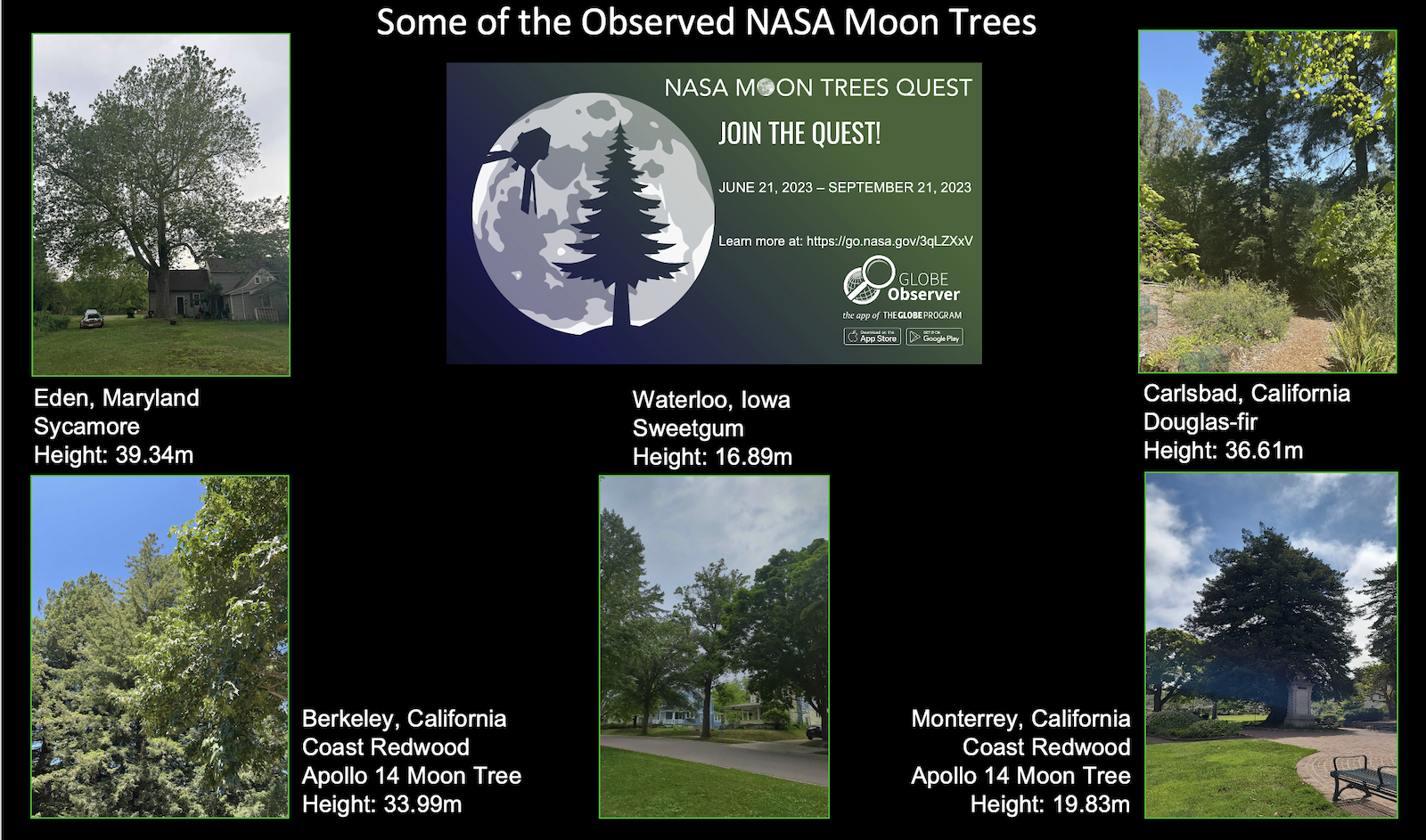
Why Tree Height?
Trees and climate are intricately linked. Trees cool and moisten our air, fill it with oxygen, store carbon, create shade and habitats for other creatures, anchor the soil and slow the movement of water, and provide food, fuel, and building materials for human activities. Forests are considered one of the world’s largest banks for the carbon emitted into the atmosphere through natural processes and human activities, since trees store carbon as they grow. Carbon calculations help scientists forecast climate change. Tracking how trees are changing over time – both in height and in the number of trees that make up an area – is also a good indicator of an ecosystem’s health in a changing climate. Both tree height and trunk circumference can also help to measure biomass, the total mass of living material above ground in a particular area.
Associated Links:
Selected Activities and Resources Related to Tree Height:
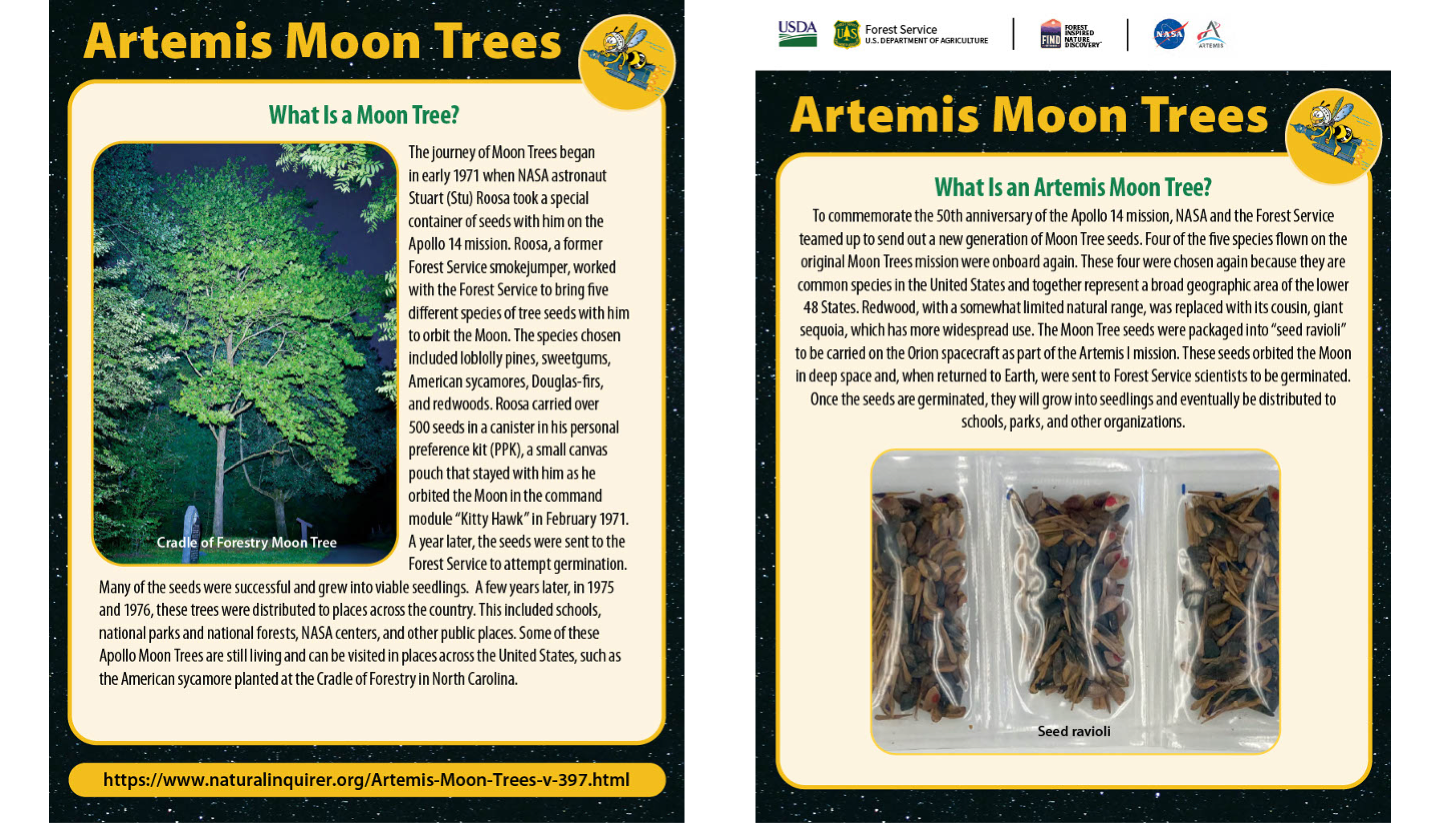
To commemorate the 50th anniversary of the Apollo 14 mission, NASA and the Forest Service teamed up to send out a new generation of Moon Tree seeds. This card set features information on the original Moon Trees and why they came to be, as well as information on the next generation of Artemis Moon Trees and how they came to be. Students can explore careers, tree types, NASA missions, rockets, and so much more!

GLOBE Observer: Trees - Introduction
[2:13] An introductory video for the GLOBE Observer: Trees tool, which allows users to measure the height of trees using their smartphone.

How To Take A Trees Observation
[8:21] GLOBE Observer Trees science lead Brian Campbell (NASA Wallops Flight Facility) demonstrates how to use the GO app to take a tree height measurement.
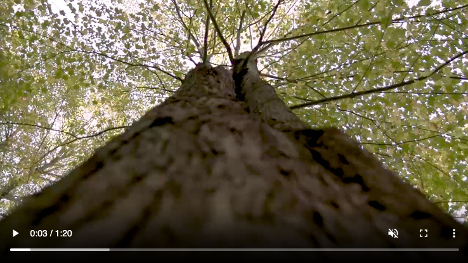
[1:20] Trees are diverse and tree height can tell us a lot about Earth’s ecosystems. Satellites and ground-based measurements are used to track tree growth, monitor how well an ecosystem supports trees, and estimate how much carbon is stored by trees. GLOBE’s citizen scientist community encourages citizen scientists to use the GLOBE Observer app to take tree height measurements with their smart phones. These observations are added to a freely available, global inventory of tree height.

Stories Trees Tell: Learning the Language of Our Tall Forest Friends
This activity will help you understand how dendrochronology, or the study of data from tree ring growth, can help us to understand more about a tree’s age along with trauma and environmental events it has encountered over the course of its lifetime.
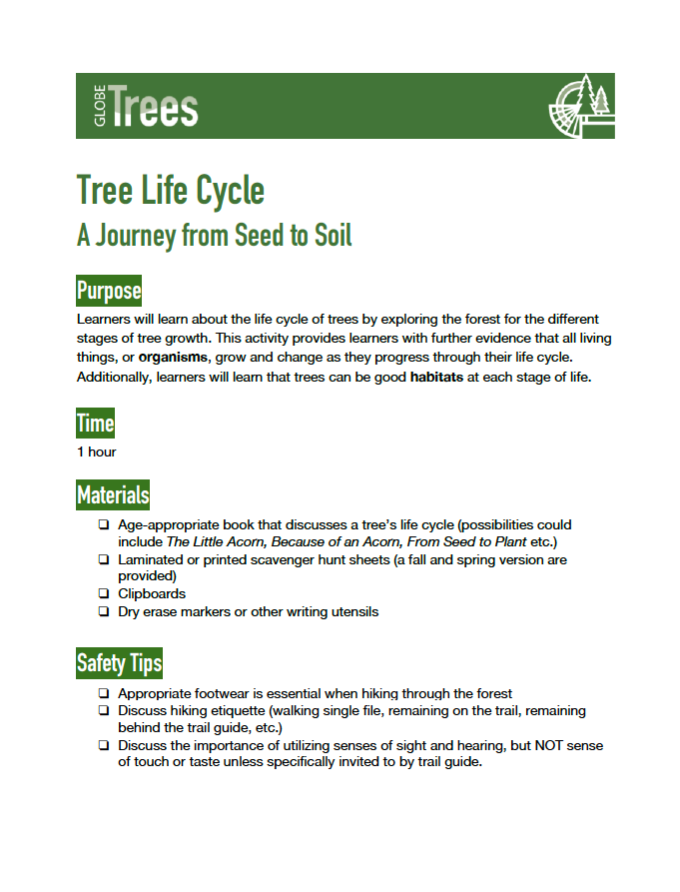
Tree Life Cycle: A Journey from Seed to Soil
Learn about the life cycle of trees by exploring the forest for the different stages of tree growth. This activity provides learners with further evidence that all living things grow and change as they progress through their life cycle, and that trees can be good habitats at each stage of life.









